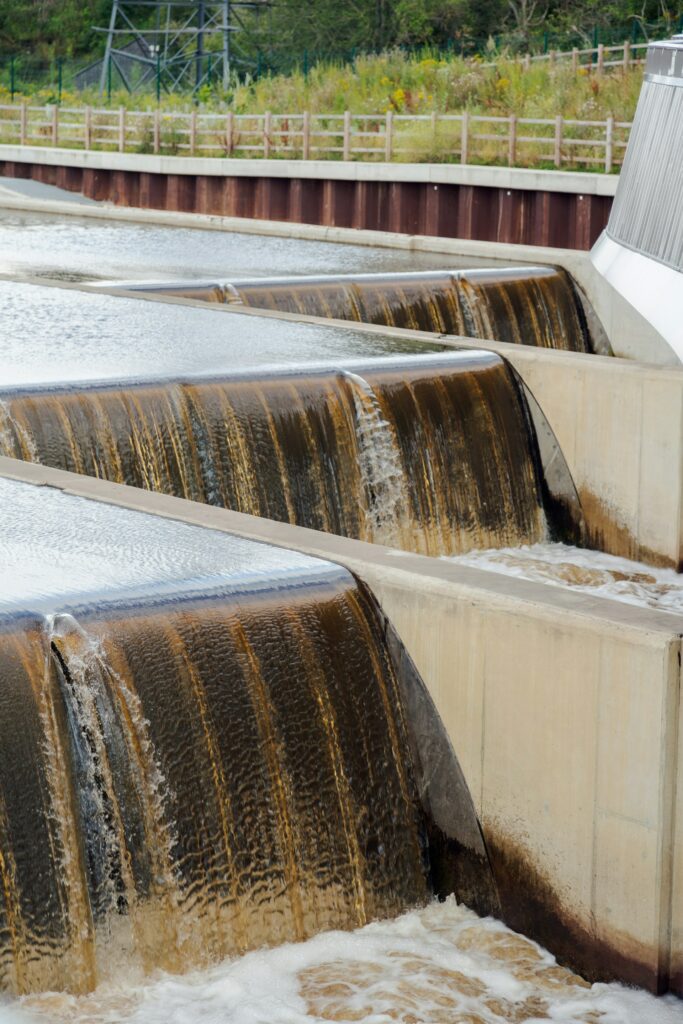Fluorene ( PAH) that has been widely studied due to its unique chemical properties and environmental impact. Present in industrial emissions, effluents, and some manufactured products, it raises concerns for both human health and ecosystems . Used in various fields, it plays a key role in the manufacture of dyes, technical polymers, and advanced electronic components . Its analysis is therefore essential to ensure that packaging, materials, and polymers comply with current regulatory standards.
In this article, we will explore in detail the properties of fluorene, its sources of contamination, its industrial uses, as well as the analytical methods used for its detection. Companies wishing to ensure the quality and safety of their products can rely on the expertise of YesWeLab , which offers a wide range of analyses dedicated to manufacturers.
Table of Contents
Introduction
Definition of fluorene
Fluorene is a polycyclic aromatic hydrocarbon (PAH) consisting of three fused benzene rings, forming a compact tricyclic structure. Its chemical formula is C₁₃H₁₀, and it is distinguished by its ability to fluoresce violet under ultraviolet (UV) light, hence its name. Contrary to what its name might suggest, it does not contain any fluorine atoms. It appears as white, slightly odorous crystals, reminiscent of the smell of naphthalene.
Importance of fluorene
Fluorene is a compound of interest to scientists, the chemical industry, and environmental monitoring agencies alike. Due to its presence in tars, fuels, and some plastics, it is commonly detected in various environments, including air, water, and soil. Its study is essential for:
- Understand its chemical and physical properties, which influence its behavior in the environment.
- Evaluate its toxic and ecotoxicological effects.
- Regulate its use in industry to minimize health and environmental risks.
Chemical and physical properties of fluorene
Molecular structure and chemical formula
Fluorene, also known as 9H-fluorene, is a polycyclic aromatic hydrocarbon (PAH) composed of three benzene rings fused into a rigid tricyclic structure. Its chemical formula is C₁₃H₁₀, and it has a molar mass of 166.22 g/mol. The peculiarity of this structure lies in the presence of a hydrogen atom in position 9, which gives it a certain chemical reactivity and the possibility of forming functionalized derivatives.
Appearance and physical condition
At room temperature, fluorene appears as white to slightly yellowish crystals, with a characteristic odor similar to naphthalene. It is not very volatile, but can easily sublime at high temperatures.
Thermal properties
Fluorene has specific thermal characteristics that influence its behavior in different environments:
- Melting point: It melts at a temperature between 113 and 115°C, which makes it relatively stable under normal storage conditions.
- Boiling point: It boils at around 295°C, indicating its low volatility.
- Vapor pressure: Its vapor pressure is low at room temperature, which means it does not dissipate easily into the atmosphere.
Solubility and behavior in solvents
Fluorene is virtually insoluble in water, with an estimated solubility of 1.8 mg/L. However, it is highly soluble in non-polar organic solvents, such as:
- Benzene
- Toluene
- Acetone
- Petroleum ether
This characteristic is important for its applications in organic chemistry and the materials industry.
Spectroscopic properties and fluorescence
One of the most notable properties of fluorene is its fluorescence. It absorbs light in the ultraviolet range and emits violet light when exposed to this radiation. This fluorescent ability makes it a compound of interest in several applications, including:
- Fluorescent markers in analytical chemistry.
- Components for organic light-emitting diodes (OLEDs).
- Fluorophores used in biology and medicinal chemistry.
Chemical reactivity and stability
Fluorene is a relatively stable compound, but it can undergo different chemical reactions depending on the experimental conditions:
- Acidity: The hydrogen atom in position 9 is slightly acidic (pKa = 22.6 in DMSO). Under the action of a strong base, it can be deprotonated, forming a very nucleophilic aromatic anion, used as a ligand in organometallic chemistry.
- Oxidation: It can be oxidized to fluorenone (C₁₃H₈O), a ketone derivative used in the synthesis of many organic compounds.
- Electrophilic substitution reactions: its aromatic structure allows it to react with various electrophilic agents, such as halogens or Lewis acids, which allows the synthesis of numerous fluorenyl derivatives.
These properties make fluorene versatile in various fields, from fine chemicals to advanced materials.
Are you looking for an analysis?

Origin and presence of fluorene in the environment
Natural formation of fluorene
Fluorene is a compound that forms naturally in geological and thermal processes involving organic matter. It is mainly detected in:
- Coal tar, which is produced by distilling coal at high temperatures.
- Forest fires, where incomplete combustion of plant material generates many PAHs, including fluorene.
- Volcanic activity, which releases various aromatic hydrocarbons into the atmosphere and soils.
Although these natural sources contribute to its presence in the environment, they remain marginal compared to anthropogenic emissions.
Anthropogenic sources of fluorene
Human activities are the main cause of fluorene dispersal in the environment. It is generated during specific industrial processes and through the use of certain materials. The main anthropogenic sources are:
- Incomplete combustion of fuels: The combustion of gasoline, diesel, and fossil fuels in vehicle engines and thermal power plants releases fluorene into the air in the form of fine particles.
- Industrial emissions: Petrochemical industries, refineries and steel production produce fluorene during the processing of coal and heavy hydrocarbons.
- Plastic and rubber waste: When incinerated or exposed to high temperatures, these materials release fluorene in the form of gas or solid residue.
- Tobacco smoke and grilling: Although less significant on an industrial scale, these domestic sources also contribute to the presence of fluorene in indoor and outdoor air.
Presence of fluorene in the air
Fluorene is a semi-volatile compound, meaning it can be transported as a gas or fine particle in the atmosphere. It is found in urban and industrial areas where air pollution is high.
Once released into the air, it can undergo various processes:
- Atmospheric transport: it can be transported over long distances before falling back down due to precipitation or adsorption on solid particles.
- Photochemical degradation: Under the action of UV rays, fluorene can be transformed into fluorenone, a more oxidized and potentially more reactive compound.
- Deposition on soil and water: When particles containing fluorene fall to the ground, they contaminate soil and water bodies.
Contamination of soils and sediments
Fluorene is commonly found in polluted soils, particularly near industrial sites, former coke plants, and landfills where hydrocarbons are present. It can accumulate and persist for long periods of time due to its poor biodegradation.
In aquatic environments, fluorene can also accumulate in sediments, particularly those located downstream of urban and industrial areas. It can remain trapped there for decades, posing a risk to aquatic organisms living near the substrate.
Presence of fluorene in water
Fluorene is poorly soluble in water but can be detected in different forms:
- Dissolved in very low concentration in surface and ground water.
- Adsorbed onto suspended particles, facilitating its transport over long distances in rivers and estuaries.
- Present in industrial effluents, particularly those from petrochemical production and wastewater treatment.
Its low natural degradation in aqueous environments means that it can persist in the environment and be absorbed by aquatic organisms, with risks of bioaccumulation.
Dispersion and transformation mechanisms
Once in the environment, fluorene is subject to different dispersion and transformation mechanisms:
- Adsorption on solid particles: it attaches to soils rich in organic matter and to sediments.
- Biological degradation: Some specialized bacteria can break down fluorene, but this process is slow and depends on environmental conditions.
- Oxidation and photodegradation: under the effect of oxygen and UV radiation, it can transform into more oxidized compounds such as fluorenone.
These processes influence its persistence and degree of contamination in ecosystems.
Toxicity and impact on health and the environment
Fluorene exposure and absorption routes
Exposure to fluorene can occur through different routes, depending on human activities and environmental contamination. The main routes of absorption are:
- Inhalation: In industrial and urban environments, fluorene is often present as airborne particles. Inhalation is a common route of exposure for workers in the petrochemical and metallurgical sectors.
- Ingestion: Fluorene can contaminate food and water by adsorption on organic matter. Consuming products from a polluted environment, such as certain fish or seafood, can lead to its ingestion.
- Skin contact: People handling tar, oils, or products containing fluorene can absorb this compound through the skin.
Effects of fluorene on human health
Studies on the toxicity of fluorene indicate that its impact on health depends on the dose, duration of exposure and route of absorption.
- Acute toxicity: In high doses, inhalation or ingestion of fluorene can cause irritation of the respiratory tract, digestive disorders and an inflammatory reaction of the skin and mucous membranes.
- Chronic toxicity: Prolonged exposure may cause more serious effects, including liver and kidney problems, due to the gradual accumulation of the compound in these organs.
- Carcinogenic potential: Unlike other polycyclic aromatic hydrocarbons (PAHs), fluorene is not classified as a known carcinogen by the International Agency for Research on Cancer (IARC). However, some studies suggest it may promote genetic mutations and hormonal imbalances, although the evidence remains limited.
Bioaccumulation and ecotoxicity
Fluorene can affect not only human health, but also aquatic and terrestrial ecosystems.
- Presence in food chains: In aquatic environments, it is poorly soluble in water but can be absorbed by living organisms. It accumulates in the fat of fish and crustaceans, thus exposing predators higher up the food chain, including humans.
- Effects on aquatic organisms: in fish, molluscs and invertebrates, it can cause enzymatic alterations, disorders of embryonic development and a reduction in reproductive capacities.
- Impact on soils and vegetation: When adsorbed onto soil particles, it reduces the bioavailability of nutrients and can alter plant growth, affecting the ecological balance of contaminated ecosystems.
Degradation and persistence in the environment
Fluorene is a persistent compound, meaning it degrades only slowly in nature. Its environmental fate depends on several processes:
- Photodegradation: under the effect of UV rays, it can be transformed into fluorenone, a more oxidized but still polluting compound.
- Biological degradation: Certain specialized bacteria can metabolize fluorene under aerobic or anaerobic conditions, although this process is slow and inefficient in highly contaminated environments.
- Transport and migration: When present in the form of microparticles, it can be transported by wind and runoff water, thus contributing to widespread contamination of soils and aquatic environments.
Regulations and preventive measures
Due to its toxic potential and its impact on the environment, several standards and regulations govern the presence of fluorene in natural and industrial environments.
- Air and water quality standards: The US EPA (Environmental Protection Agency) and the European Union impose maximum concentration limits in ambient air, surface water and groundwater.
- Monitoring of contaminated soils: in industrial areas, soil and sediment analysis protocols make it possible to identify the presence of fluorene and limit its dispersion.
- Obligations for industries: Companies using fluorene in their production processes must implement strict waste management protocols and emission filtration systems to limit its release into the environment.

Industrial uses of fluorene
Manufacture of plastics and fluorinated resins
Fluorene is an essential precursor in the synthesis of advanced polymers. It is used in the manufacture of fluorinated resins, materials with excellent thermal, chemical, and mechanical resistance. These resins are used in several sectors:
- Automotive industry: production of plastic parts resistant to high temperatures and solvents.
- Aerospace: Lightweight and strong composite materials for fuselages and internal components.
- Electronics: insulating components for printed circuits and electrical equipment.
The incorporation of fluorene into polymers improves their thermal stability and resistance to UV radiation, which extends their lifespan and performance.
Role of Fluorene in the Dye and Pigment Industry
Fluorene and its derivatives are used in the synthesis of advanced organic compounds, particularly in the pharmaceutical and agrochemical industries.
- Drug synthesis: Some fluorene derivatives are being studied for their biological properties, particularly as anticancer and antiviral agents.
- Pesticide production: it serves as a basis for the production of active molecules used in the protection of crops against pests and diseases.
- Catalysis and organometallic chemistry: the fluorenyl anion is a ligand frequently used in homogeneous catalysis, improving the efficiency of chemical reactions in industry.
Applications in fine chemistry and pharmacy
Fluorene is a key element in the production of organic dyes and fluorescent pigments. Thanks to its unique optical properties, it is incorporated into formulations of paints, inks, and specialty coatings.
- Industrial and textile paints: fluorene makes it possible to obtain long-lasting fluorescent colors, resistant to chemical attacks and extreme climatic conditions.
- Security inks: used in inks for banknotes, passports and official documents, it provides anti-forgery properties thanks to its fluorescence under UV light.
- Photoluminescent materials: It is incorporated into signage coatings and reflective textiles to improve visibility in the dark.
Use in electronics and optics
Challenges and limitations of industrial applications of fluorene
The fluorescent properties of fluorene make it a material of choice for the electronics sector. It is used in:
- Organic light-emitting diodes (OLEDs): Polyfluorene, a polymer derived from fluorene, is a key component of high-performance OLED displays, found in televisions, smartphones and smartwatches.
- Photovoltaic cells: certain fluorene copolymers are being studied to improve the efficiency of organic solar panels, thanks to their ability to efficiently convert light into energy.
- Optical sensors: It is used in the design of ultraviolet and infrared light sensors, used in metrology and scientific instruments.
Although fluorene offers many advantages for industry, its use must be regulated in order to limit its environmental and health impacts.
- Strict regulations: certain applications of fluorene are subject to environmental standards to limit its release into air, water and soil.
- Industrial waste management: Industries handling fluorene must implement effluent and residue treatment procedures to avoid contamination.
- More environmentally friendly alternatives: research is moving towards the development of biodegradable fluorene derivatives, thus reducing the risks of long-term pollution.

Regulations and safety standards related to fluorene
Environmental regulation and emissions monitoring
Due to its presence in air, water, and soil, fluorene is monitored by several environmental protection agencies.
- European Union: Fluorene is classified as a priority pollutant under Directive 2008/105/EC, which imposes limit values in surface water. Its release is regulated under the REACH Directive (Registration, Evaluation, Authorisation and Restriction of Chemicals), which requires manufacturers to declare, limit and control hazardous substances.
- United States (US EPA): The Environmental Protection Agency (EPA) sets limits for contamination in drinking water and regulates its emissions into the air under the Clean Air Act. Fluorene is included on the list of hazardous organic pollutants (HAPs) subject to restrictions.
- France: Fluorene is monitored in drinking water and contaminated soil by organizations such as ANSES (French Agency for Food, Environmental and Occupational Health Safety) and the DGCCRF (General Directorate for Competition, Consumer Affairs and Fraud Control).
These regulations impose strict emission control and reduction protocols on industries to limit contamination of natural environments.
Safety standards in industry and work
Workers exposed to fluorene, particularly in the petrochemical, plastics and metallurgical sectors, are subject to protection protocols defined by various international standards.
- Occupational exposure limit values (OELs): these thresholds vary from country to country, but they define maximum concentrations permitted in the air of workplaces.
- Individual and collective protection: the use of gloves, masks and ventilation systems is mandatory to limit inhalation and skin contact.
- Medical monitoring of workers: periodic examinations are recommended to detect possible long-term toxic effects related to exposure.
Under European Directive 98/24/EC on the protection of workers against chemical risks, companies must assess risks and implement appropriate prevention plans.
Regulations on the presence of fluorene in industrial materials and products
Because fluorene is used in the manufacture of plastics, pigments and electronic products, specific regulations govern its presence in certain materials.
- Food contact materials: In Europe, EC Regulation No. 1935/2004 requires migration tests to ensure that fluorene and other PAHs do not contaminate foodstuffs at dangerous concentrations.
- Cosmetics and pharmaceuticals: Although fluorene is not a common active ingredient in these sectors, purity and non-contamination testing are required to ensure the absence of hazardous residues in formulations.
- Inks and coatings: Some fluorescent inks and paints containing fluorene must meet volatile organic compound (VOC) emission standards to limit their environmental impact.
Contamination thresholds and regulation of laboratory analyses
To assess the presence of fluorene in the environment and industrial products, quantification limits and analytical standards have been established.
- Contamination thresholds in water and soil: According to European regulations, fluorene must not exceed 0.1 µg/L in surface water and 1 mg/kg in polluted soil.
- Standardized Analytical Methods: Laboratories follow standardized protocols to quantify fluorene, including:
- ISO 17993 standard for the detection of PAHs in water.
- US EPA Method 8270 for the Analysis of Semi-Volatile Organic Compounds in Solid and Liquid Matrices.
- GC-MS (Gas Chromatography-Mass Spectrometry) and HPLC-MS/MS (High Performance Liquid Chromatography) for accurate quantification.
These standards ensure reliable and reproducible analyses, essential for controlling contamination and ensuring regulatory compliance.
Sanctions and liability of manufacturers
Companies that fail to comply with fluorene regulations face administrative and financial penalties.
- Fines for pollution: if the authorized thresholds are exceeded, financial penalties are applied, which can amount to several thousand euros per offense.
- Decontamination obligations: Industrial sites contaminated by fluorene must be decontaminated according to strict protocols, which represents additional costs for companies.
- Legal liability: Company directors can be prosecuted if contamination causes a major health risk or proven ecological damage.

Laboratory analysis of fluorene
Importance of Fluorene Analysis
Monitoring fluorene in the laboratory allows:
- Assess human and environmental exposure by detecting its presence in air, water, soil and consumer products.
- Check the regulatory compliance of manufacturers in terms of discharges and contamination of materials.
- Determine the potential toxicity based on its concentrations in different matrices.
Testing is particularly important for the petrochemical, food, pharmaceutical and environmental industries, which must meet strict standards to avoid health risks.
Sample collection and preparation techniques
Before any analysis, it is essential to collect samples according to standardized protocols in order to avoid any contamination or alteration of the results.
- Water sample collection: water is collected in glass bottles previously rinsed with acetone, with storage at 4°C to avoid fluorene degradation.
- Soil and sediment sampling: homogeneous sampling is carried out using core samples, the samples being stored away from light to preserve their composition.
- Air samples: Particle filters capture fluorene in gaseous form or adsorbed on aerosols, requiring desorption before analysis.
- Sampling of materials and packaging: materials in contact with food are analyzed after migration tests, simulating real conditions of use.
These steps ensure the reliability of the results and allow the evaluation of the real concentrations of fluorene in the different matrices.
Analytical methods used for the detection of fluorene
Laboratories use state-of-the-art techniques to identify and quantify fluorene with high precision.
- Gas chromatography-mass spectrometry (GC-MS): This method is preferred for the analysis of PAHs, including fluorene, in air, water and soil samples. It allows quantification down to concentrations below µg/L.
- High-performance liquid chromatography (HPLC-MS/MS): This is used for more complex matrices, such as oils and plastic materials, where efficient separation of compounds is required.
- UV-Visible and fluorescence spectroscopy : exploiting the fluorescent properties of fluorene, this method is used to detect minute traces in organic solutions.
- US EPA Method 8270: reference for the analysis of semi-volatile organic compounds, it is used in the monitoring of industrial effluents and contaminated soils.
These techniques ensure reliable detection of fluorene, even at very low concentrations.
Quantification requirements and sensitivity of analyses
Laboratories must comply with limits of quantification (LOQ) adapted to regulatory and industrial requirements.
- Drinking water: LQ set at 0.1 µg/L to ensure compliance with health standards.
- Contaminated soils: LOQ of 1 mg/kg, threshold beyond which remediation may be required.
- Food products and packaging: Thresholds defined based on migration tests, with limits lower than µg/kg.
Careful sample preparation and the use of high-performance analytical equipment are essential to ensure accurate and reproducible results.
Quality control and laboratory accreditations
Fluorene analyses must be carried out in accredited laboratories, following rigorous validation protocols.
- ISO 17025 Standard: This certification guarantees the reliability of results, the use of validated methods and the competence of laboratories.
- COFRAC accreditation: In France, it certifies that laboratories meet strict requirements in terms of environmental and industrial analyses.
- Sample Control: Duplicate testing and the use of control samples help verify measurement accuracy and avoid analytical errors.
The application of these standards ensures complete traceability of analyses and reliable results for manufacturers and control authorities.

Examples of industrial and environmental analyses
Detection of fluorene in wastewater and industrial effluents
Industrial liquid discharges are one of the main sources of fluorene contamination. The petrochemical, metallurgical, and plastics industries produce effluents containing polycyclic aromatic hydrocarbons (PAHs), including fluorene.
- Effluent monitoring: Water discharged from industrial sites must be analyzed to detect the presence of organic pollutants and verify its compliance with environmental standards.
- Analytical methods: Laboratories use gas chromatography-mass spectrometry (GC-MS) to detect minute traces of fluorene in wastewater.
- Case in point: A study conducted on refineries revealed that the effluents contained fluorene at concentrations reaching 5 µg/L, requiring the installation of advanced wastewater treatment systems.
The results of these analyses make it possible to impose filtration and treatment measures on manufacturers in order to reduce the contamination of aquatic environments.
Analysis of fluorene in plastic and polymer materials
Fluorene is used as a building block in the manufacture of some engineering plastics and specialty coatings. Its integration into materials requires migration and stability testing to prevent accidental release.
- Migration tests: for plastics in contact with foodstuffs, specific migration tests are carried out to verify that fluorene does not pass into food.
- Safety standards: EC Regulation No. 1935/2004 imposes a concentration limit of less than 0.1 mg/kg in food packaging.
- Laboratory analysis: High-performance liquid chromatography (HPLC-MS/MS) is used to accurately measure residual amounts of fluorene in polymers.
- Concrete case: studies have shown that certain plastic coatings intended for food packaging could contain traces of fluorene, leading to restrictions on the use of certain chemical additives.
These analyses guarantee the conformity of plastic materials and help prevent any risk of contamination of food and the environment.
Monitoring of fluorene in contaminated air and soil
Fluorene can be present in the atmosphere in the form of fine particles resulting from the incomplete combustion of hydrocarbons and industrial processes. Its deposition on the ground can lead to contamination of land and groundwater.
- Air analysis: Samples are taken using particle filters and then analyzed by gas chromatography. This technique can detect fluorene concentrations below 1 ng/m³ in ambient air.
- Assessment of polluted soils: In industrial sites and former coke plants, core samples are taken to measure the accumulation of fluorene in the soil.
- Pollution control standards: The French Environment and Energy Management Agency (ADEME) imposes threshold values beyond which soil remediation is required. For fluorene, this limit is generally 1 mg/kg of dry soil.
- Concrete case: On a disused industrial site, high concentrations of fluorene were detected, requiring soil bioremediation to eliminate the contamination before the site's rehabilitation.
Air and soil analyses help prevent health and environmental risks linked to the presence of fluorene in ecosystems.
Case studies and laboratory analysis results
Various studies have been conducted on the presence and impact of fluorene in various contexts. These analyses provide a better understanding of its dispersion and long-term effects.
- Surface water study: Research carried out on rivers located downstream of industrial facilities showed that the concentration of fluorene could reach 0.2 µg/L, requiring increased monitoring.
- Analysis of incineration fumes: in waste treatment plants, fluorene is detected at significant levels in exhaust gases, requiring the installation of high-efficiency filtration systems.
- Marine sediment study: In some port areas, fluorene accumulates in sediments, posing a risk to aquatic wildlife and requiring dredging and treatment of polluted sludge.
YesWeLab supports you in your flourene analyses
In conclusion, fluorene is an organic compound whose chemical and industrial properties make it a key element in several sectors, including petrochemicals, electronics, and polymer manufacturing. However, its presence in the environment and its toxic potential require strict monitoring and in-depth analysis. Thanks to technological advances, laboratories are now able to precisely quantify fluorene in various matrices, thus ensuring product compliance and protecting ecosystems.
Companies wishing to ensure the quality and safety of their products can rely on YesWeLab and its expertise in laboratory analyses for industry. Thanks to its network of laboratories and its complete analytical catalogue, YesWeLab offers solutions adapted to the needs of manufacturers in the food , packaging, materials and polymers , cosmetics and environmental .
Why choose YesWeLab?
- Multi-sector expertise : YesWeLab offers customized analyses covering a wide spectrum of industries and ensures compliance with the strictest regulatory standards .
- A high-performance digital platform : manufacturers benefit from centralized access to their analyses, from sample submission to receipt of results, with transparent and secure monitoring .
- A network of accredited laboratories : thanks to its 200 partner laboratories in France and Europe , YesWeLab ensures reliable, rapid analyses that comply with the requirements of ISO 17025 and COFRAC certifications .
Manufacturers seeking to control the quality of their products and ensure regulatory compliance YesWeLab 's expertise for their analyses.




